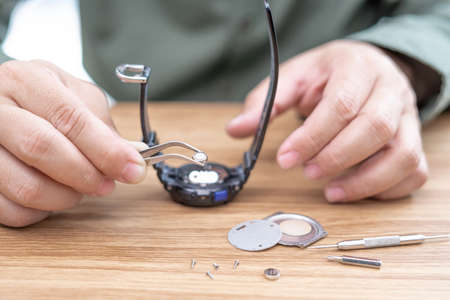Understanding Microcurrent Treatments
Microcurrent facials have steadily gained popularity across the UK, especially among those who seek gentle yet effective skincare solutions. These treatments involve the use of low-level electrical currents that mimic the body’s natural bioelectricity, stimulating facial muscles and boosting cellular activity. As a result, microcurrent facials are often celebrated for their ability to help tone the skin, reduce the appearance of fine lines, and encourage a more youthful complexion without resorting to invasive procedures. For many in Britain, where changing seasons and environmental stressors can impact skin health, microcurrent technology offers a promising approach to maintaining a radiant look while supporting long-term skin resilience. Whether you’re dealing with dullness from urban pollution or seeking to soften early signs of ageing, understanding how microcurrent treatments work is an essential first step before considering the investment—be it at a clinic or through an at-home device.
2. The Cost of Professional Microcurrent Treatments in the UK
When considering microcurrent facial treatments, many people first look to professional clinics and salons for expert care and visible results. Across the UK, the price you’ll pay for these in-clinic sessions can vary quite a bit depending on where you live, the reputation of the clinic, and what’s included in your treatment package. Below is a breakdown of typical prices across various regions, alongside what you can generally expect for your investment.
| Region | Typical Price per Session (£) | What’s Included |
|---|---|---|
| London & South East | £80 – £150 | Consultation, cleansing, full microcurrent facial (45-60 mins), optional add-ons (mask, massage) |
| Northern England | £60 – £100 | Consultation, cleansing, microcurrent session (40-50 mins), basic aftercare advice |
| Scotland & Wales | £55 – £95 | Cleansing, microcurrent session (40 mins), light moisturising finish |
| Northern Ireland | £50 – £90 | Cleansing, microcurrent session (35-45 mins), simple aftercare guidance |
What You Get for the Price:
- Personalised Consultation: Most reputable clinics will begin with a brief skin assessment to tailor your treatment and address any specific concerns.
- Professional-Grade Equipment: Clinics use advanced devices that deliver precise currents for maximum efficacy under trained hands.
- Expert Technique: Therapists are skilled in targeting facial muscles for a natural lift and improved tone.
- Add-Ons: Higher-end treatments may include soothing masks, gentle facial massage or hydrating serums as part of the session.
- Aftercare Advice: Guidance on post-treatment skincare routines or recommended products is often provided to help maintain results.
The cost reflects not only the expertise and technology involved but also the premium experience and relaxing environment offered by UK clinics. While prices are generally higher in London and major cities due to demand and overheads, options exist throughout the country to suit different budgets—all promising that signature lifted and refreshed glow beloved by British beauty enthusiasts.

3. Exploring At-Home Microcurrent Devices
As the popularity of microcurrent facial treatments continues to rise across the UK, many people are beginning to weigh the benefits of investing in at-home devices as an alternative to regular salon visits. The British market has responded to this demand with an impressive range of home-use microcurrent gadgets, catering to various budgets and skincare needs.
The Range of Devices Available
From compact handheld tools ideal for beginners to advanced multi-functional systems designed for more targeted results, UK shoppers have a wealth of options. Leading brands such as NuFACE, FOREO, and MyoLift have become household names, offering devices that promise professional-level results with consistent use. Many of these gadgets include user-friendly features, such as built-in timers and adjustable intensity levels, making them accessible even to those new to microcurrent technology.
Cost Considerations
When it comes to pricing, at-home microcurrent devices in the UK typically range from around £150 for entry-level models to upwards of £400 for more sophisticated versions with additional attachments or app connectivity. While this initial outlay might seem significant compared to a single salon session—which often costs between £50 and £120 per treatment—the long-term savings can be substantial if you’re committed to regular use. For many skincare enthusiasts, this investment quickly pays off after just a handful of sessions at home.
Accessibility and Convenience
One of the main draws of at-home microcurrent devices is their sheer convenience. With no need to book appointments or travel to a clinic, users have the flexibility to incorporate treatments into their daily routine—whether that’s during a quiet evening in or as part of a Sunday self-care ritual. Most devices are compact enough for easy storage or travel, making it simple to maintain consistency even with a busy British lifestyle. Furthermore, online retailers and high street shops like Boots and John Lewis make these devices readily available throughout the UK, both in-store and for delivery.
A Gentle Approach to Skincare Investment
While the upfront cost may require some consideration, many find that the ongoing accessibility and control over their own skincare routines make at-home microcurrent devices an appealing option. By exploring the variety on offer and considering your specific goals—be it lifting, toning, or overall rejuvenation—you can select a device that aligns with both your budget and your skin’s unique needs.
4. Comparing Costs: Clinic Visits vs. Home Devices
When considering microcurrent treatments in the UK, one of the most significant factors is the cost difference between visiting a professional clinic and investing in a home device. It’s essential to assess not just the upfront price but also the long-term expenses, especially for those keen on maintaining consistent skin results over time.
Let’s look at two typical scenarios:
Scenario 1: Regular Clinic Treatments
Many London clinics charge between £60 and £120 per session, with optimal results often requiring an initial course of 6–12 sessions, followed by monthly maintenance visits. Here’s how this can add up:
| Treatment Plan | Cost Per Session | Total Sessions (Year 1) | Total Cost (Year 1) |
|---|---|---|---|
| Initial Course (10 sessions) | £80 | 10 | £800 |
| Maintenance (1 session/month) | £80 | 12 | £960 |
| Total (Year 1) | – | 22 | £1,760 |
Scenario 2: Investing in a Home Device
A quality home-use microcurrent device typically costs between £200 and £500, with minimal ongoing costs aside from conductive gels or replacement attachments. Most users find these devices last several years with proper care.
| Device Type | Upfront Cost | Annual Consumables (e.g., gels) | Total Cost (Year 1) | Total Cost (Year 2+) |
|---|---|---|---|---|
| Mid-range Home Device | £350 | £40 | £390 | £40/year* |
| *Assumes device remains functional and does not require replacement within several years. | ||||
The Verdict: UK Real-life Considerations
If you’re based in Manchester or Edinburgh and plan regular treatments, you could easily spend well over £1,500 in your first year alone at a reputable clinic. In contrast, a one-off investment in a home device can deliver similar skin-boosting benefits at a fraction of the cost—especially if you’re dedicated to regular self-care routines. For those with busy schedules or outside major cities, the convenience and savings of a home device may outweigh the pampering experience of professional sessions.
Effectiveness and Safety Considerations
When weighing up the value of microcurrent treatments, it’s essential to examine how effective and safe home-use devices are in comparison to professional treatments. For many in the UK, this decision is influenced by both results and peace of mind, particularly when considering the rigorous standards set by British regulatory bodies such as the Medicines and Healthcare products Regulatory Agency (MHRA).
Comparing Results: Professional Clinics vs Home Devices
Clinically-administered microcurrent treatments typically use higher-grade equipment operated by trained professionals. This often means more precise application and potentially more noticeable results, especially over a shorter period. Many UK-based users report firmer skin and improved texture after a series of salon visits. In contrast, at-home devices are generally designed to be gentler for safety reasons, which may lead to subtler changes that require longer-term commitment. Still, with consistent use, some individuals find they maintain a healthy glow and subtle lift—though expectations should be managed.
Safety Standards: What to Look For
Safety is paramount, especially with electrical skincare devices. In the UK, reputable home-use microcurrent devices should carry CE marking or be approved by the MHRA, indicating compliance with strict health and safety requirements. Users are encouraged to purchase from established brands and authorised retailers to avoid counterfeit products that may not meet these standards. Furthermore, reading user manuals carefully and following recommended guidelines helps minimise potential side effects such as redness or mild tingling.
User Experiences Across the UK
Feedback from UK consumers suggests that those who benefit most from home microcurrent devices are individuals looking for gentle maintenance rather than dramatic transformation. Many appreciate the convenience of treating their skin at home while watching telly or during their evening wind-down routine. However, some note initial apprehension about using electrical currents on their face—reassured only after confirming device credentials and reading positive reviews from fellow British users. Ultimately, both effectiveness and safety hinge on realistic expectations, product quality, and adherence to local regulations.
6. Cultural Perspectives and Personal Preferences in the UK
When considering whether to invest in a home microcurrent device or continue with professional treatments, it is essential to understand British attitudes towards skincare technology and self-care. In the UK, there is an increasing openness towards innovative beauty solutions, yet traditions and personal comfort still play significant roles in decision-making. Many Britons value the expertise and reassurance provided by clinic-based professionals. The experience of visiting a reputable clinic is often seen as both a social treat and a way to ensure proper technique, safety, and visible results. However, with the rise of advanced at-home devices and increased awareness of skin health, more people are warming to the idea of performing treatments themselves. Factors such as privacy, convenience, and cost-effectiveness appeal strongly to those with busy schedules or who prefer self-care routines within the comfort of their own homes. Nonetheless, for some, the ritualistic aspect of visiting a clinic—complete with expert advice and a sense of indulgence—remains unmatched. Ultimately, cultural preferences in the UK reflect a balance between embracing technological progress for self-care and maintaining traditional values associated with professional expertise and personal pampering.
7. Conclusion: Making an Informed Choice
When weighing up whether to invest in a home microcurrent device here in the UK, it’s important to take a holistic view. Consider not just the initial outlay but also your ongoing skincare needs, personal goals, and daily routine. If you’re someone who enjoys regular salon treatments and values professional guidance, you might find that in-clinic sessions offer peace of mind and visible results. However, for many, the flexibility and long-term savings of owning a home device are particularly appealing—especially when factoring in the convenience of fitting treatments around busy British lifestyles.
Think about your skin type, expectations, and willingness to commit to consistent use. Home devices can deliver subtle yet noticeable improvements if used regularly, but they do require patience and dedication. On the other hand, clinics may provide faster or more dramatic results at a higher cumulative cost.
Ultimately, making an informed choice means balancing cost-effectiveness with efficacy and suitability for your lifestyle. Take time to read trusted reviews from UK users, consult with skincare professionals where possible, and assess the warranty and aftercare support offered by different brands available on the British market.
By considering all these factors, you’ll be better placed to decide whether investing in a home microcurrent device aligns with your skincare ambitions and budget—ensuring your journey towards healthier, radiant skin is both enjoyable and worthwhile.


